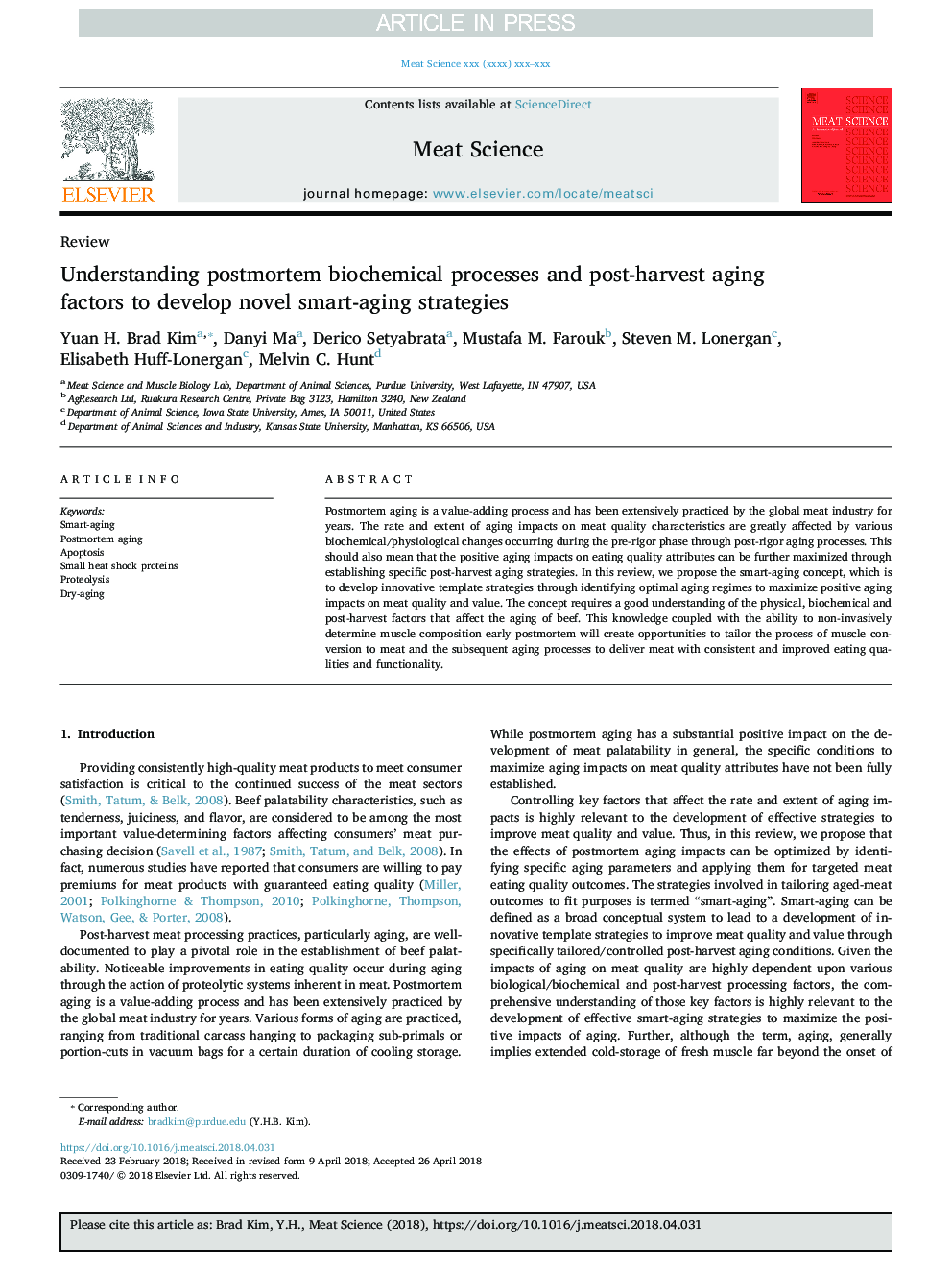| Article ID | Journal | Published Year | Pages | File Type |
|---|---|---|---|---|
| 8502547 | Meat Science | 2018 | 17 Pages |
Abstract
Postmortem aging is a value-adding process and has been extensively practiced by the global meat industry for years. The rate and extent of aging impacts on meat quality characteristics are greatly affected by various biochemical/physiological changes occurring during the pre-rigor phase through post-rigor aging processes. This should also mean that the positive aging impacts on eating quality attributes can be further maximized through establishing specific post-harvest aging strategies. In this review, we propose the smart-aging concept, which is to develop innovative template strategies through identifying optimal aging regimes to maximize positive aging impacts on meat quality and value. The concept requires a good understanding of the physical, biochemical and post-harvest factors that affect the aging of beef. This knowledge coupled with the ability to non-invasively determine muscle composition early postmortem will create opportunities to tailor the process of muscle conversion to meat and the subsequent aging processes to deliver meat with consistent and improved eating qualities and functionality.
Related Topics
Life Sciences
Agricultural and Biological Sciences
Food Science
Authors
Yuan H. Brad Kim, Danyi Ma, Derico Setyabrata, Mustafa M. Farouk, Steven M. Lonergan, Elisabeth Huff-Lonergan, Melvin C. Hunt,
